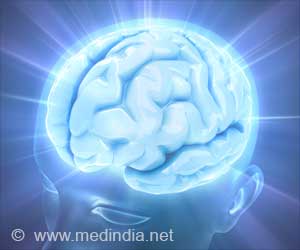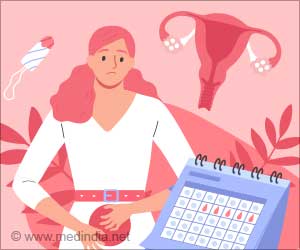There is no safe level of exposure to secondhand smoke. Give your child a smoke-free childhood is the message of the world cancer day this year.
Around 700 million children, almost half of the world's children, breathe air polluted by tobacco smoke, particularly at home.
'Second-hand smoke is a health hazard for you and your family. There is no safe level of exposure to secondhand smoke. Give your child a smoke-free childhood,' says the website of International Union Against Cancer (UICC).World Cancer Day is an annual event organised by the UICC.
10 million cancer cases are reported globally every year. Experts warn that the case load is expected to double by 2020, if preventive measures are not taken.
Cancer is, in general, more common in industrialized nations, but there has been a growth in cancer rates in developing countries too, particularly as these nations adopt the diet and lifestyle habits of industrialized countries.
Cancer prevalence in India is estimated to be around 2.5 million, with over 8,00,000 new cases and 5,50,000 deaths occurring each year due to this disease in the country.
Anyone can get cancer at any age; however, about 80 percent of all cancers occur in people over the age of fifty-five.
Cancer can affect any organ in the body. Approximately one hundred human cancers are recognized.
But what's the trigger?
Research says that the exact cause of cancer is not known. 'Most cancers result from permanent damage to genes or from mutations, which occur either due to internal factors, such as hormones, immune conditions, metabolism, and the digestion of nutrients within cells, or by exposure to environmental or external factors,' says Dr Bapsy, who heads the Kidwai Cancer Institute in Bangalore.
Nevertheless, tobacco use, diet, infectious diseases, chemicals, and radiation do cause at least 70 per cent of cancers, experts insist.
One-third of all cancers can be prevented by saying No to tobacco and alcohol, says Dr R Rajkumar, Professor, Community Medicine of PSG Institute of Medical Science and Research, Coimbatore, Tamil Nadu. Modification of life style and food habits can prevent two-third of the cancers, he points out.
The WHO has estimated that 91 percent of oral cancers in South-East Asia are directly attributable to the use of tobacco and this is the leading cause of oral cavity and lung cancer in India. Cancer has become one of the ten leading causes of death in India. It is estimated that there are nearly 2-2.5 million cancer cases at any given point of time. 3 lakh deaths occur annually due to cancer.
An estimate shows that the total cancer burden in India will increase from 7 lakh new cases per year to 14 lakh by 2026.
The main objectives of the National Cancer Control Programme include primary prevention of cancers by health education. The need for early detection of cancer in order to decrease mortality is stressed. Experts say that most of the cancers are preventable and curable provided they are detected at an early stage.
According to one study, in developed countries, 80 percent of the cancers are cured because of early detection. But in developing countries, 80 percent of cancers are incurable at the time of detection if they are detected at all. The developing countries possess only 5 percent of the global resources for cancer control.
Also cancer treatment is expensive simply because the cases come to the hospitals at an advanced stage.
Take breast cancer for example, which is the commonest cancer in India, if it was detected in stage I and II, it can be treated at a cost of Rs 60000-80000 and the chances of cure is 95 percent. In stage III, the chances of cure is only 50 percent and the treatment cost will run to lakhs. If it crosses stage III, then the chances of cure is minimal and you have to spend astronomical sums.
Free treatment is extended in government hospitals. But many hospitals do not have the latest facilities or equipments. Moreover, patients come to these hospitals at an advanced stage of the disease.
Dr. H. Muthukrishnan, Head of the Cancer Department in Coimbatore Medical College Hospital (CMCH) said the number of cancer patients coming to the hospital was on the rise. Every year there was an increase of 100 -200 cases. On an average around 1,700 to 1,800 cases were reported in the hospital.
Most of the cases coming to the medical college hospital were found to be in advanced stages. Many come after they run out of money after paying hefty bills in private hospitals. If detected in the early stages, there was a 90 percent chance to treat and cure the disease, he too pointed out.
Bindu Rajiv of ‘Make-A -Wish Foundation’ which works to bring smile back on the terminally ill children by fulfilling the wishes of the kids, like helping the children meet their favourite actors etc, said that out of the 10 children they received every month eight were found to be suffering from leukaemia. The Foundation today works in different parts of the world.
It's been eleven years since Sharada, a resident of Chennai, capital of Tamil Nadu, was been cured of the disease. When the news was broken to her, she was in her teens and was devastated. She thought that was the end of the world for her.
But no, like a phoenix, she has risen again, is all right now, holding a headhunter's job at an IT major, earning a handsome salary, is now a wife, a mother and a social worker working to remove the stigma off the disease.
'I remember those days with excruciating pain. When I visited the doctor for a check up, I was shocked to see my reports that said I had lymphoma, cancer that affects the immune system,' she says.
Like many other girls of her age, she did not know what cancer meant. 'All I knew about the disease was what I had seen in the films. You vomit blood, get admitted to the hospital, suffer pain and then die. I thought that would be my life,' she recalls.
But when it was Dr Shantha of the famed Adyar Cancer Institute who told her that cancer was a disease characterized by the uncontrolled growth and spread of abnormal cells and had to be treated accordingly. And it was eminently treatable, she assured her. Dr.Shanta now stands vindicated.
Sharada notes with satisfaction the recent advances made in cancer treatment. 'I went though a through course that included radiation, chemotherapy and a surgery. After a complete course I tested negative. But I still keep going for my annual check up,' she said.
Doctors say there has been a sea of change in treatment protocol ever since Sharada was treated. 'Today, treatment has been highly targeted and we avoid many side effects. For instance, there isn't much hair loss during treatment or any discolouration of the skin. That might seem odd to boast about, but in a stigmatised disease these things matter,' says Dr Shantha.
The image guided radiotherapy, the CT and PET -CT show not just the results but progress at every stage of treatment. 'Earlier, radiologists just sat in their benches looked at reports and wrote positive or negative. They were not in touch with the patients. Today, after every course of treatment the patient is screened to see if treatment is working. And we get more involved,' says a senior radiotherapist at Apollo Speciality Hospital, Chennai.
Today, Sharada, like many other survivors is a happy woman. 'All that I would say is cancer is no more about just a disease, but it's about attitudes.'
Source-Medindia
EMMANUEL GLADWIN/M










